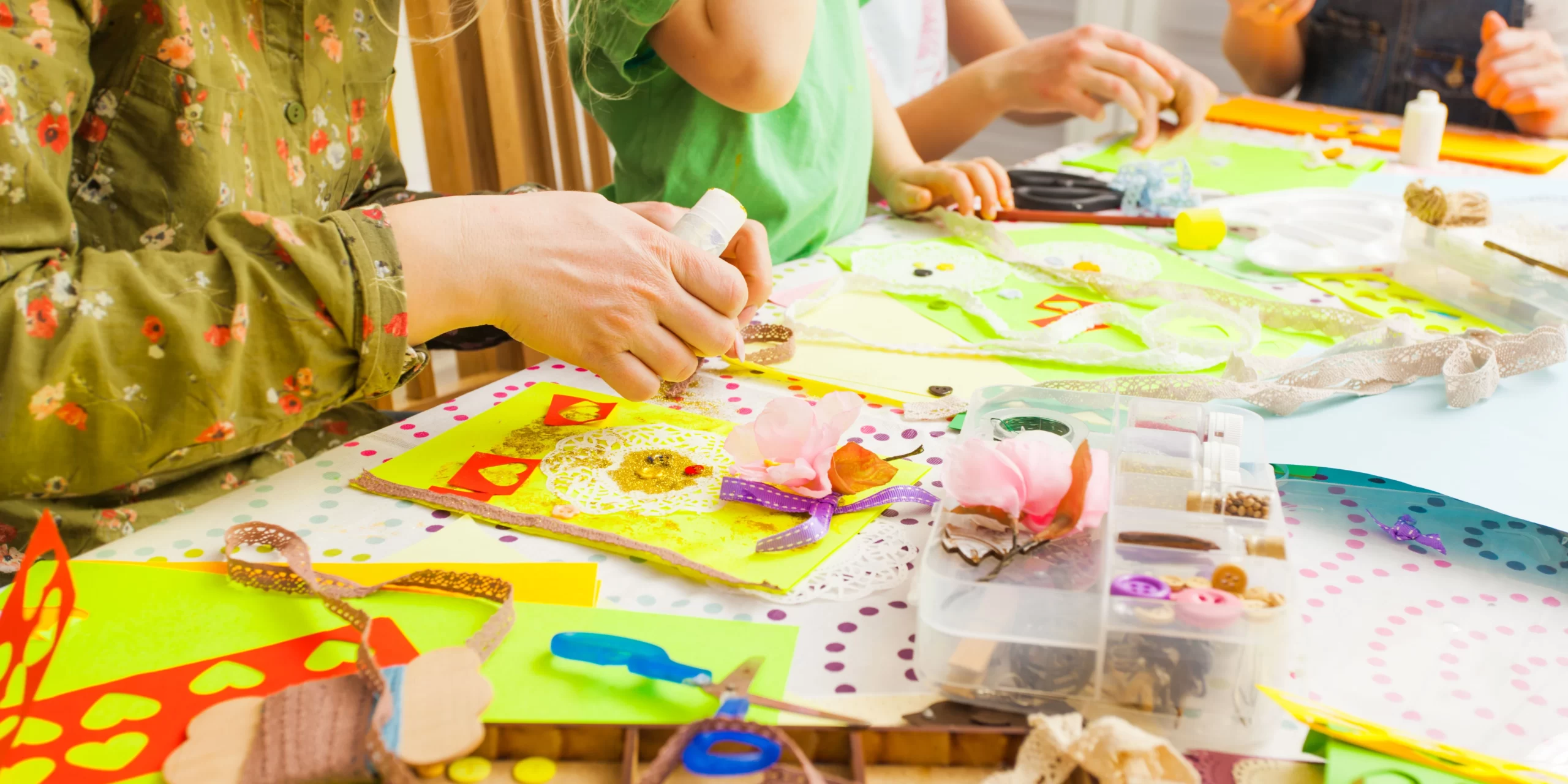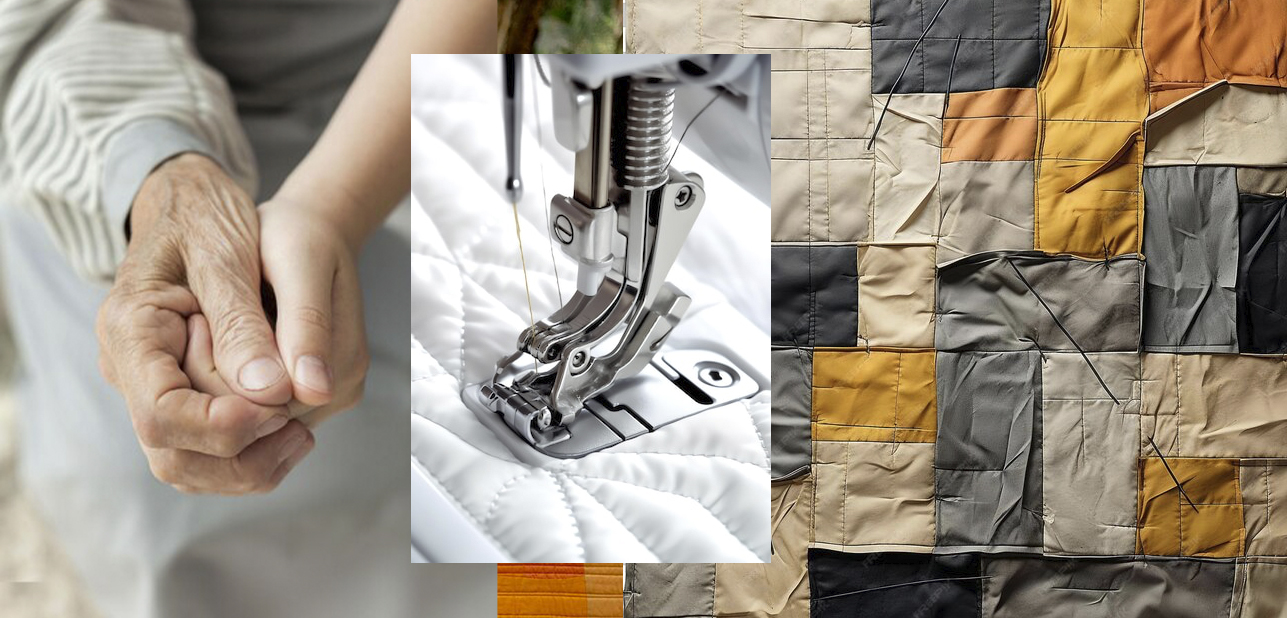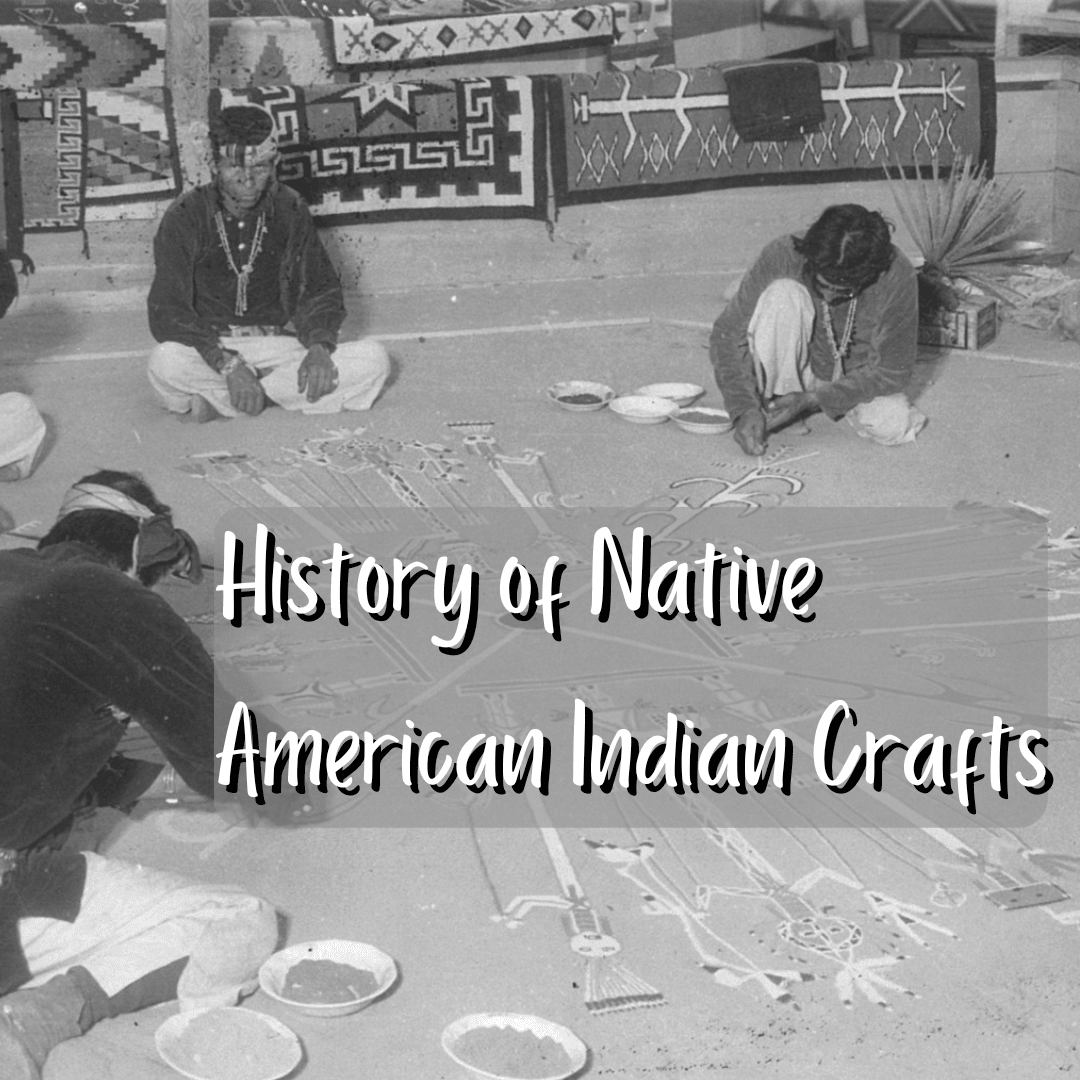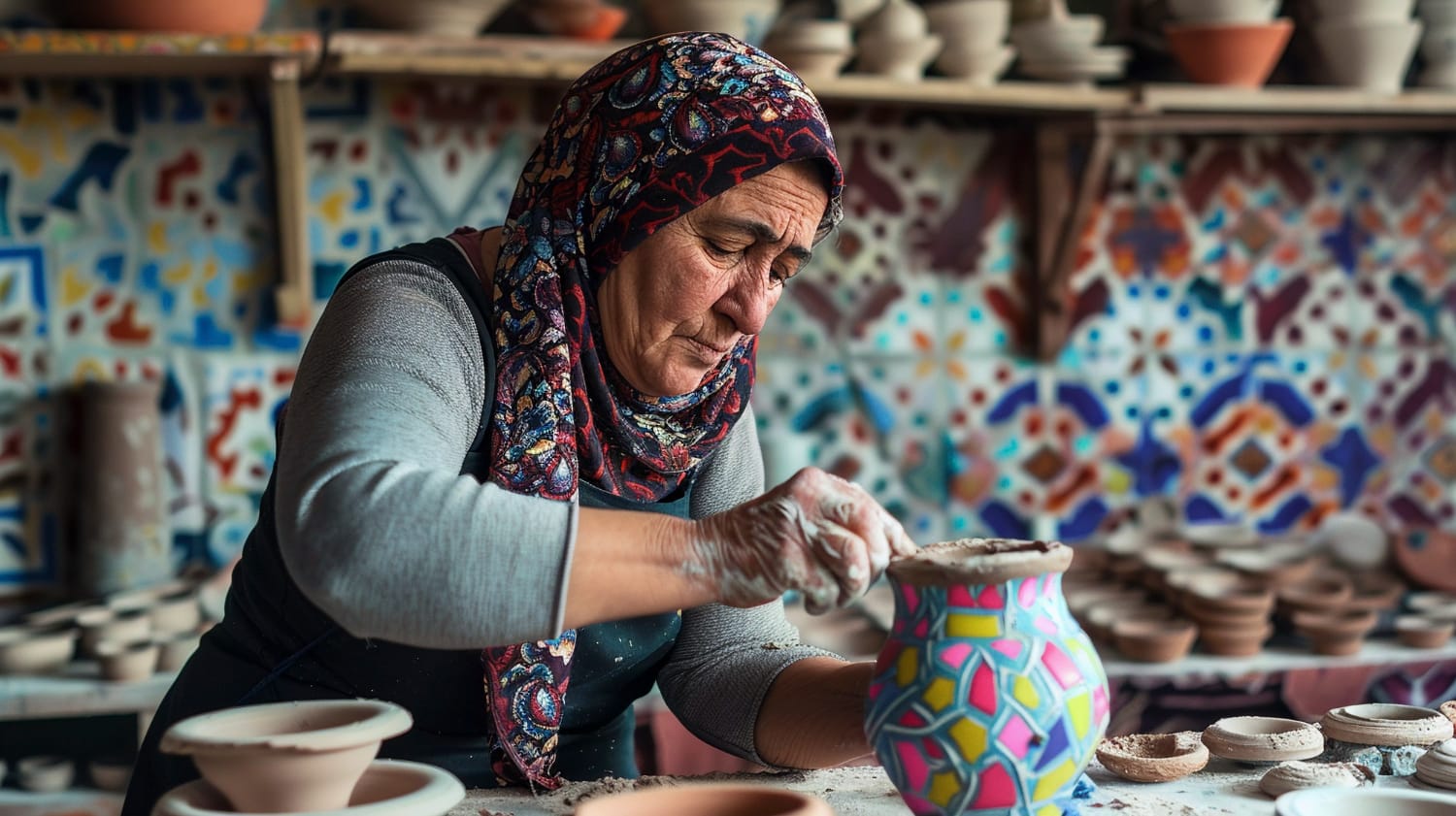The importance of crafting skills in early childhood education

The Importance of Crafting Skills in Early Childhood Education
In early childhood education, the development of crafting skills serves as a fundamental building block for children’s growth. These skills not only foster creativity but also enhance critical thinking and refine fine motor abilities, laying the groundwork for a range of future learning experiences.
Crafting activities encompass a broad spectrum of projects, from simple collages made with torn paper to intricate model-building using clay or recycled materials. Such activities engage children in hands-on learning that captivates their imaginations. Moreover, they encourage the use of different materials and tools, further stimulating curiosity and exploration.
The benefits of engaging in crafting activities for young learners are numerous and impactful:
- Creativity Enhancement: Crafting offers children a unique avenue to express themselves. Through mediums such as painting, drawing, or sculpting, children convey their emotions and thoughts creatively. For instance, a child may create a vibrant painting that reflects their feelings about a family event, thereby translating personal experiences into artistic expression.
- Improved Fine Motor Skills: Activities such as cutting, gluing, and painting develop essential hand-eye coordination. The act of precise cutting along lines or threading beads onto a string requires focus and practice, helping children strengthen their dexterity. These skills are vital for later tasks, including writing and using utensils.
- Social Skills: Group crafting projects promote teamwork, patience, and communication. For example, when children collaborate to create a giant mural, they learn to share ideas, negotiate roles, and appreciate diverse perspectives, all of which are essential interpersonal skills.
- Cognitive Development: Crafting presents numerous opportunities for problem-solving, which reinforces logical thinking. When a child encounters a challenge, such as how to make a structure stand sturdy, they learn to brainstorm solutions, experiment, and even pivot in their approach.
Moreover, crafting activities prepare children for academic success by bridging the gap between play and learning. It integrates subjects such as math and science into real-world applications. For instance, measuring lengths for a paper mache project involves basic math skills, while understanding the concept of mixing colors can introduce children to foundational science principles.
As we delve deeper into the significance of these skills, we will explore how crafting can reshape early childhood education and contribute to a child’s holistic development. This exploration may shed light on practices that educators, parents, and caregivers can adopt to nurture these essential skills in young learners, promoting a well-rounded foundation that carries well into later education and life experiences.
DIVE DEEPER: Click here to discover how to create delicious ethnic dishes at home
Unleashing Creativity Through Crafting Skills
Crafting skills serve as a crucial pathway for creativity in early childhood education, significantly influencing a child’s developmental trajectory. By engaging in crafting activities, children tap into their innate creativity while cultivating essential skills that extend beyond the craft table. These experiences encourage children to think outside the box, embrace experimentation, and approach challenges with a solution-oriented mindset.
Research indicates that creativity in children is linked to academic success and emotional well-being. For instance, a study conducted by the American Psychological Association asserts that children who engage in creative activities such as crafting demonstrate improved problem-solving abilities and enhanced emotional expression. When children design and create, they explore new ideas and make choices that reflect their individuality, ultimately fostering a sense of self-esteem and confidence.
Building Cognitive Connections through Crafting
Cognitive development is another significant benefit derived from crafting activities. As children manipulate various materials and tools, they encounter scenarios that challenge their thinking skills. For example, building a structure with blocks not only requires spatial awareness but also encourages children to apply concepts such as balance and engineering. This hands-on exploration helps them grasp essential principles of physics and geometry in a fun and engaging way.
Additionally, crafting promotes the development of critical thinking skills as children learn to assess their creations, identify areas for improvement, and implement changes accordingly. Whether they are fixing a torn paper collage or adjusting the color balance in their painting, these critical assessments lay the groundwork for making informed decisions later in life.
- Problem-Solving Skills: Crafting activities present various challenges, such as how to combine colors effectively or create a stable structure. Children learn to tackle these issues creatively, which nurtures their ability to think analytically.
- Emotional Intelligence: Crafting provides a safe space for emotional exploration, allowing children to express feelings that they might not yet have the words for. The act of creating can also serve as a coping mechanism during times of stress or change.
- Adaptability: Many crafts yield unexpected results, which helps children learn that not everything goes as planned. Adapting to the outcome of their efforts encourages resilience and flexibility in their thinking.
In a world brimming with technology, incorporating crafting into early childhood education can sometimes be overshadowed. However, the tactile nature of these activities connects children to their surroundings, promoting an insightful balance between digital and hands-on experiences. Through crafting, educators can help forge a solid link between creative expression and foundational learning, preparing children for complex problem-solving scenarios they will face in the future.
Understanding the profound impact crafting skills can have on a child’s cognitive and emotional development reinforces the need for educational frameworks that prioritize such activities. With continued focus on the importance of crafting skills, educators and parents alike can ensure children embark on a fulfilling educational journey filled with inquiry, creativity, and discovery.
The Importance of Crafting Skills in Early Childhood Education
Crafting skills play a crucial role in the holistic development of children during their early years. Engaging in crafting activities not only fosters creativity but also enhances essential life skills necessary for personal growth and development. Let’s delve deeper into some of the remarkable advantages that crafting skills offer to young learners through the following structured table:
| Advantage | Description |
|---|---|
| Cognitive Development | Crafting activities enhance problem-solving skills and encourage children to think critically as they navigate through various creative tasks. |
| Motor Skills Improvement | Hands-on crafting aids in developing both fine and gross motor skills, which are essential for tasks such as writing and other daily functions. |
| Emotional Expression | Crafting serves as a medium for children to express their emotions, promoting emotional intelligence and reducing anxiety through creative outlets. |
| Social Skills Enhancement | Group crafting activities encourage collaboration and communication among peers, which are vital for forming strong social bonds. |
The multifaceted benefits of crafting skills significantly contribute to the overall development of young children. By encouraging participation in these enriching activities, educators and parents alike can equip children with necessary tools to thrive in various aspects of their lives. Through understanding and incorporating crafting into early childhood education, caregivers can nurture well-rounded individuals who are ready to face future challenges. Exploring the myriad ways crafting elevates learning can lead to innovative teaching strategies that significantly enhance educational outcomes.
DISCOVER MORE: Click here for delicious recipes
Enhancing Fine Motor Skills through Crafting
One of the overlooked yet vital aspects of crafting in early childhood education is the development of fine motor skills. The activities associated with crafting—cutting, gluing, drawing, and painting—require children to use their hands in precise ways that strengthen their hand-eye coordination and dexterity. For instance, the simple act of squeezing glue from a bottle or threading beads onto a string not only helps refine these motor skills but also sets the foundation for future writing abilities.
According to the National Association for the Education of Young Children (NAEYC), fine motor skills are essential for performing daily tasks such as buttoning shirts or tying shoelaces, showcasing the practical importance of crafting activities. Moreover, research from the University of Minnesota highlights that children who engage in more hands-on activities demonstrate greater fine motor control. Such skills are crucial as children transition to more demanding educational tasks in elementary school, where writing and other dexterous activities become central to the curriculum.
Fostering Social Skills Through Collaborative Projects
Crafting also presents an excellent opportunity for children to engage in collaborative projects, which are essential for developing social skills. Group crafting encourages communication, sharing of ideas, and collaboration. As children come together to construct a mural or create themed decorations for an event, they practice valuable interpersonal skills such as negotiating roles, compromising on ideas, and working towards a common goal.
- Teamwork: Participating in group crafts helps children learn to work together effectively, understanding that teamwork can lead to better outcomes than individual efforts alone.
- Conflict Resolution: When disagreements arise during projects, children must navigate those tensions and devise solutions, enhancing their ability to handle conflicts constructively.
- Empathy: Working closely with peers on crafting projects can also foster empathy as children learn to appreciate different perspectives and ideas.
This social dimension enriches early childhood education, moving skills from the individual level into a broader context where cooperation and community engagement become essential themes. The collaborative nature of crafting thus aids in preparing children for future scenarios that require teamwork, such as sports, group projects in school, or even family gatherings.
Encouraging Cultural Awareness through Diverse Crafting Techniques
As educators incorporate crafting into early childhood curricula, exposure to diverse crafting techniques can significantly enhance cultural awareness among young learners. Engaging with various materials and methods from different cultures allows children to explore their global environment. For example, creating traditional Native American dream catchers or Japanese origami can provide insights into the stories and customs behind these practices.
Such multicultural crafting activities foster a sense of global citizenship and respect for diversity, critical components in today’s increasingly interconnected world. They allow children to appreciate their own culture while also embracing others, promoting inclusivity and understanding in an educational setting.
Furthermore, crafting activities inspired by global traditions can serve as starting points for conversations about cultural significance and history, encouraging curiosity and deeper learning beyond just the physical craft being created. As children become engaged in these practices, they not only hone their crafting skills but also develop a broader worldview, which is invaluable in their personal and academic growth.
DISCOVER MORE: Click here to dive into gardening as an art
Conclusion: The Indispensable Role of Crafting in Early Childhood Education
Crafting skills play a pivotal role in early childhood education, intertwining essential developmental milestones that shape young minds. Through crafting, children enhance their fine motor skills, laying the groundwork for future academic tasks like writing and technology use. Activities that involve cutting, gluing, and threading not only cultivate dexterity but also nurture critical cognitive processes, reinforcing the concept that learning occurs through hands-on experiences.
Moreover, collaborative crafting projects serve to strengthen social skills, teaching children the value of teamwork, conflict resolution, and empathy, all of which are indispensable attributes in today’s society. Working together fosters a sense of belonging and community, preparing them for future endeavors that require mutual collaboration. In this context, the crafting experience transcends mere play; it becomes an essential medium through which children learn to navigate relationships and contribute positively to their environments.
Additionally, engaging with diverse crafting techniques exposes children to various cultures, promoting inclusivity and an appreciation for diversity. As children create art inspired by global traditions, they embark on a journey of cultural awareness, cultivating their identities as global citizens. This exposure not only broadens their understanding of the world but also ignites curiosity—essential for lifelong learning.
In summary, the importance of crafting skills in early childhood education cannot be overstated. Educators and caregivers are encouraged to integrate crafting into daily curricula, ensuring that children receive a holistic education that fosters creativity, social interaction, and cultural appreciation. By investing in crafting, we are investing in a generation equipped with the essential skills required to thrive in an increasingly complex world.


